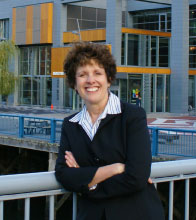The Children’s Museum as a Model for Nonprofit Leadership

Carole CharnowWhen Michael Spock first took up his role as leader of what was then called The Children’s Museum in 1962, I was an eight-year-old girl growing up in Detroit. Unbeknownst to my young self, the world around me was on the brink of transformation, and powerful forces of social change were at work. Martin Luther King, Jr. was soon to lead the march on Washington and deliver his “I Have Dream Speech,” Congress was about to pass the Equal Pay Act, and the next year, in 1963, John F. Kennedy would be assassinated in Dallas.
Amidst this turbulence of political and social evolution, Spock and his colleagues in Boston were leading a revolution uniquely their own. Having removed all the Do Not Touch signs from his experimental learning center in Jamaica Plain, Spock was soon to create one of the most progressive, innovative, and visionary cultural institutions in America, The Children’s Museum. Drawing upon the emerging collaborative and experimental ideas of the ’60s and ’70s, and building upon the unique legacy of The Children’s Museum (which dated back to 1913), Spock and his team found new ways of engaging and inspiring children, their families, their teachers, and the wider education and museum fields, and pioneered a new model of nonprofit leadership. Spock’s unprecedented concept of visitor-focused, hands-on exhibit and program development was, essentially, the “shot heard round the world” for museums, and serves as an audience engagement model that is even more resonant today.
Boston Stories is the narrative of that powerful era. But it is more than just a history of exceptional people in a remarkable time. This book, and the vast and rich website archive and media that accompany it, is a management resource for CEOs, directors, project managers, teachers, and leaders of nonprofits and for-profits alike.
We now live in a cognitive age, where collaboration, creativity, and social interaction are key not only to an organization’s vibrancy and success but to its very survival. As leaders, we seek expertise about how to develop and foster a culture of innovation and ideas, how to manage staff progressively, how to hire and develop creative thinkers. In Boston Stories it is all here, and told dynamically in the words of individuals who would go on to become some of the greatest American museum leaders of the 20th and 21st century.
For those of you who are seeking a career in the museum field or the nonprofit sector, or are a new museum leader, or just curious about how creative ideas are born and realized, in Boston Stories you will find a treasure trove of information, anecdotes, advice, and ideas. And, as importantly, you will come to know and respect the gifted, playful, progressive, and indomitable individuals who embraced the transformative energies of their time and harnessed them in the service of children and families.
As Boston Children’s Museum celebrates its Centennial in 2013, we salute these great pioneers of the progressive museum and education movement and commit ourselves to building on the Boston Stories tradition over our next 100 years.
Carole Charnow
President and CEO, Boston Children's Museum
Next: Introduction by Mike Spock